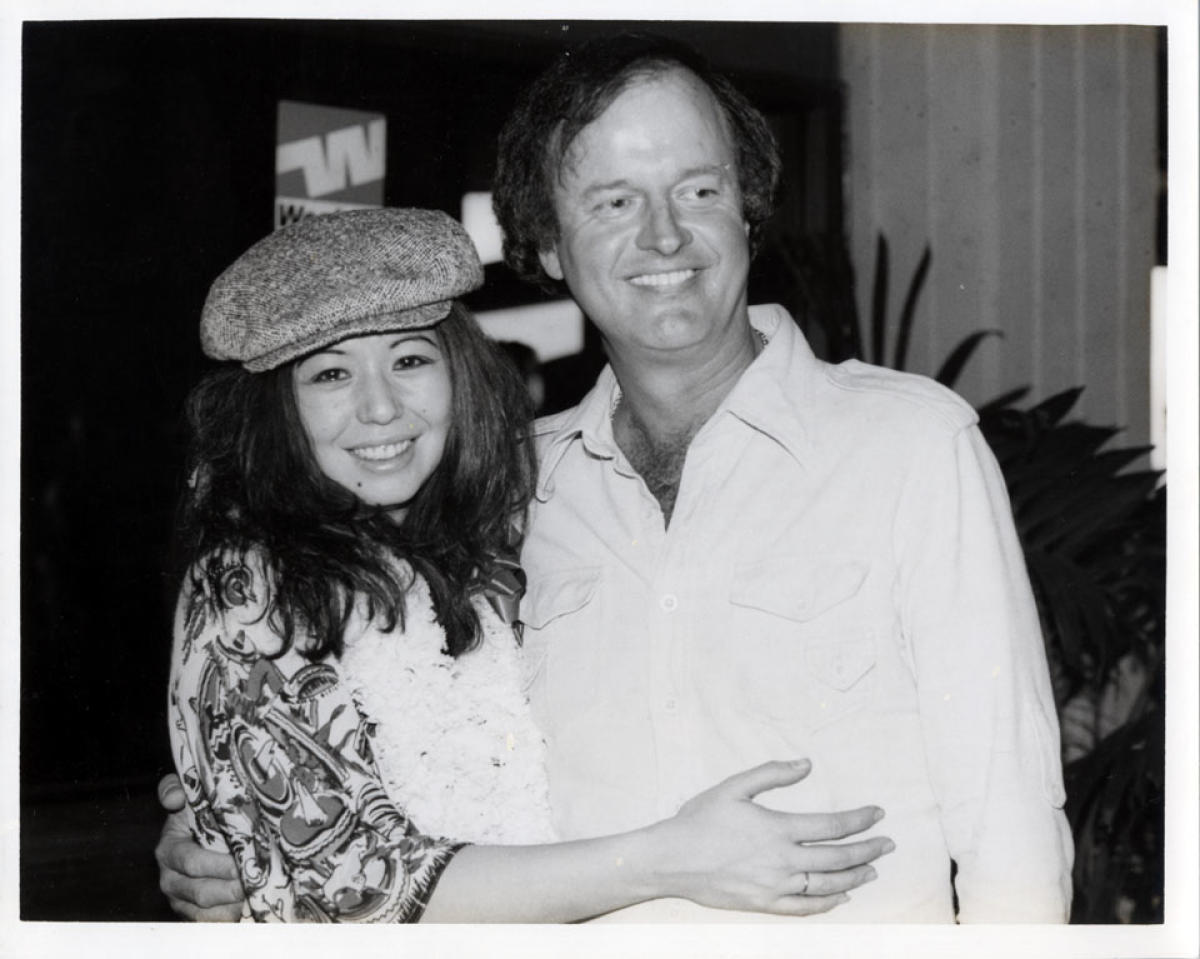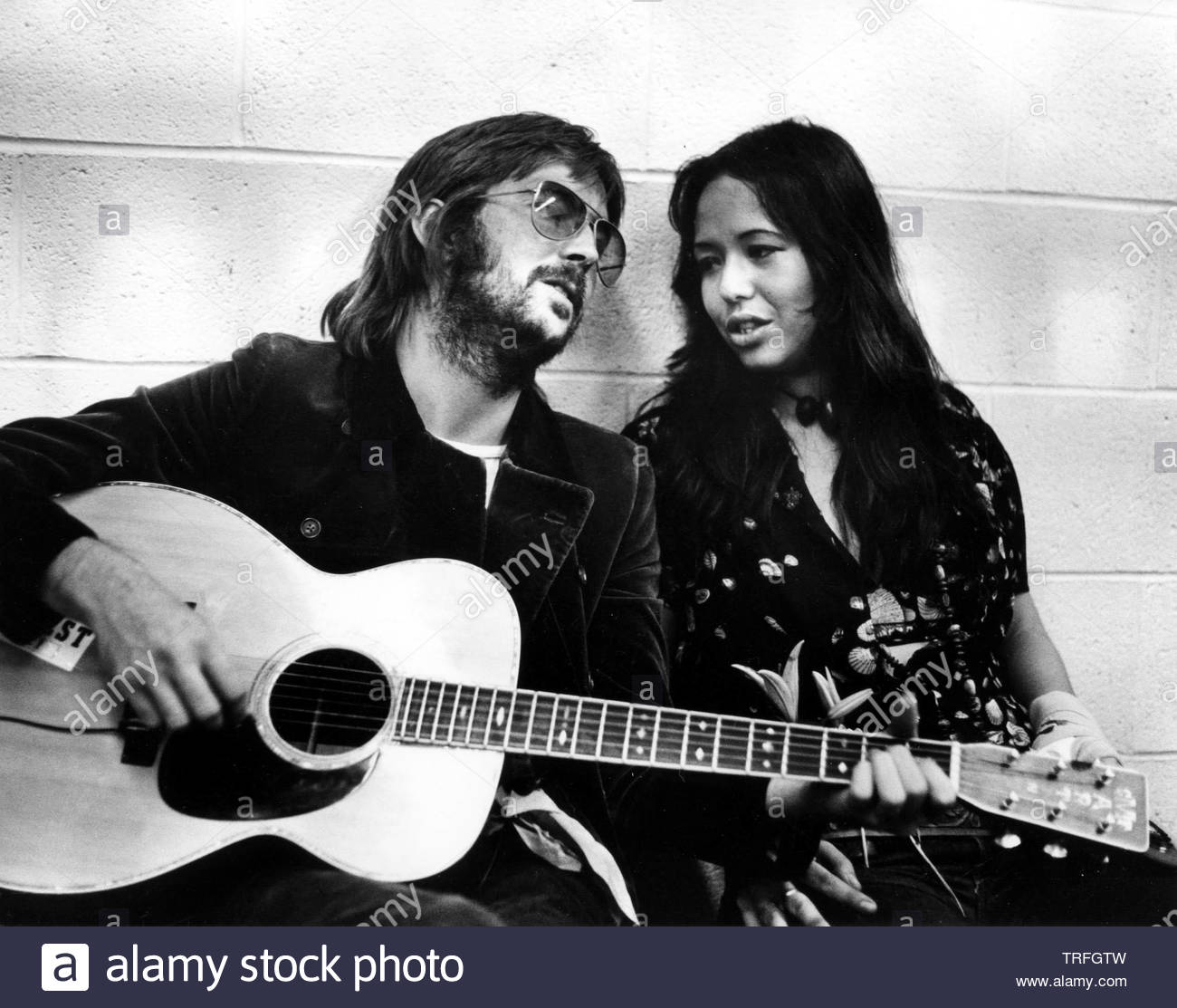Eric Clapton & Yvonne Elliman: Untold Stories & Music Legacy
Could a chance encounter in the heart of the 1970s music scene truly reshape the destinies of two iconic artists? The connection between Eric Clapton and Yvonne Elliman, a story woven with music, love, and the tumultuous currents of fame, is a testament to the power of shared experiences and creative collaboration.
The world of music, often a vibrant tapestry of personal relationships and artistic expression, holds countless stories of intertwined lives. The paths of Eric Clapton, the legendary guitarist and singer, and Yvonne Elliman, a celebrated vocalist and actress, crossed in a way that left an undeniable mark on both of their careers. This article delves into the multifaceted relationship between these two musical titans, exploring the nuances of their encounter, collaborations, and the enduring legacy they created together. Their story is a reminder that even in the fast-paced world of rock and roll, meaningful connections can be forged, influencing both the music and the lives of those involved.
| Category | Information |
|---|---|
| Full Name | Yvonne Marianne Elliman |
| Born | December 29, 1951 |
| Nationality | American |
| Occupation | Singer, Songwriter, Actress |
| Known For | Performing in "Jesus Christ Superstar," backing vocals for Eric Clapton, solo music career. |
| Marriages | Wade Hyman, Bill Oakes |
| Encounter with Eric Clapton | 1975 |
| Notable Collaboration | Backing vocals on "I Shot the Sheriff" (1974) and various live performances with Eric Clapton's band. |
| Official Website | IMDB |
Their paths first intertwined in 1974, when Elliman was asked to lend her backing vocals to Clapton's rendition of Bob Marley's "I Shot the Sheriff." This collaboration proved to be a pivotal moment, not just musically, but also in sparking a closer connection. Elliman, already recognized for her role as Mary Magdalene in the stage and film versions of "Jesus Christ Superstar," brought her distinctive vocal talents to Clapton's music, creating a synergy that resonated with audiences. Subsequently, she became an integral part of Clapton's touring band, a move that further cemented their professional and personal relationship.
The musical landscape of the 1970s was a breeding ground for collaborations, and the partnership between Elliman and Clapton flourished. Elliman's voice added a layer of depth and emotion to Clapton's work, while also providing her with a platform to showcase her own artistry. Their collaboration on "I Can't Stand It" is a prime example of their combined talents. The song became a testament to their ability to blend their unique musical styles, highlighted by a shared emotional connection that drew listeners in. Elliman's soaring vocals complemented Clapton's signature guitar work, creating a harmonious blend that still resonates today.
The year 1975 marked a significant point in their relationship. During this year, the encounter took place, further strengthening their bond. The encounter was followed by a series of performances and studio sessions. The music they created together not only reflects their talent but also highlights their deep understanding of each other's musical strengths.
The impact of their collaboration extended beyond individual songs. Elliman's presence in Clapton's band and on his recordings exposed her to a wider audience, paving the way for her own successful solo career. She soon secured a recording contract with RSO Records, a testament to her talent and the exposure she gained through her work with Clapton. This period marks a crucial juncture where both artists flourished, their musical legacies intertwined.
The "461 Ocean Boulevard" album, recorded in Miami, Florida, further highlighted Clapton's resilience and his ability to create compelling music. This album, named after the house they stayed in, offered a fresh start for Clapton and provided another opportunity for Elliman to contribute her exceptional vocal skills. The album, which featured a mix of covers and original material, showcases Clapton's versatility and his ability to blend different musical styles.
The creative energy of the 1970s rock and pop scene brought together many artists, each contributing their unique talents. Both Elliman and Clapton emerged as prominent figures of the era. The intersection of their careers was a testament to the power of collaboration. Elliman's presence on stage with Clapton, her backing vocals, and their shared creative projects exemplify how artists can influence each other. Their story remains an inspiration to those who value the powerful influence of shared experiences.
Beyond the studio and the stage, the relationship between Elliman and Clapton offered a glimpse into the personal lives of two celebrated artists. The intimate nature of their connection added depth to their music. Clapton's own experiences, including his struggle with heroin addiction, shaped his artistry. His comeback album, following his addiction, showcased his musical strength, and his ability to overcome challenges. The album, often referred to as his "comeback," marked a return to form, displaying the resilience of an artist who had overcome adversity.
The album "Slowhand" released in 1977, featured Elliman prominently. Her background vocals added richness to Clapton's work. The song "Lay Down Sally", featuring Elliman, became a major hit, further solidifying her status in the music industry. Fourteen days after its release, the song, along with four other RSO singles, made it to the top ten. This success was a milestone for both artists, demonstrating the enduring power of their collaboration.
Eric Clapton's life and career have been extensively documented. Ray Coleman's authorized biography and Michael Schumacher's "Crossroads" offer detailed insights into Clapton's journey. Steve Turner's "Conversations with Eric Clapton" provides a personal perspective. Pattie Boyd's "Wonderful Today" and Ronnie Wood's "Ronnie" add further context, offering accounts of the era.
The dynamic between Elliman and Clapton, like many relationships in the music industry, reveals both its professional and its personal sides. Their collaboration provided the platform for individual talents, while their interactions offered an intimate view of their shared experiences and artistic bond. These interactions influenced the music they produced and enriched their careers.
Eric Clapton's journey through the world of music began in October 1963, when he joined The Yardbirds. He stayed with them until March 1965, during a period when the band was influencing the early British rhythm and blues scene. His exploration of Chicago blues and his study of the guitar styles of blues legends like Buddy Guy, Freddie King, and B.B. King shaped his approach to music.
Elliman's path, like Clapton's, was shaped by her early career, including her unforgettable performance in "Jesus Christ Superstar," a role that showcased her vocal prowess. This marked a successful transition from stage to the film version. This marked the beginning of her career and established her presence within the music community.
The musical connection between Elliman and Clapton became a testament to their creativity and the value of collaborative projects. Elliman's vocal contributions highlighted their emotional connection and their combined blend of styles. Their music became a testament to their ability to resonate with each other and the importance of collaborative spirit.
The significance of their collaboration is highlighted by songs such as "I Can't Stand It," showcasing their blend of unique styles and emphasizing their bond. The interaction they had with each other in the 1970's marked a significant point in both their professional and personal lives. The collaboration was a crucial step for both artists. It propelled their careers and highlighted the influence of their partnership.
Throughout their careers, both artists have been linked with various individuals. Elliman married Wade Hyman and Bill Oakes. Clapton married Melia McEnery. Clapton's personal life also includes the birth of his daughters. Their stories offer insight into the personal lives that often accompany their artistic journeys.
Eric Clapton's musical evolution has been shaped by many factors. His relationship with Yvonne Elliman and his marriage to Melia McEnery have played roles in his life. Clapton and McEnery started dating in 1999. They later got married in 2002 in a private ceremony. Clapton's career has been filled with the high points of success, the lows of challenges, and a personal life that has been closely intertwined with his music. His story is one of resilience, and artistry that has impacted the music industry.
Yvonne Elliman and Eric Clapton have both left an indelible mark on the music world. Elliman's performance in Jesus Christ Superstar and her collaborations with Clapton are only some of the examples. Clapton's guitar playing and solo work have influenced countless artists. Their partnership has continued, and their combined legacy continues to inspire generations of musicians.
Their collaboration began with the song "I Shot the Sheriff" in 1974, and then through various musical projects. Their partnership was not only professional, it also had emotional depth that was reflected in their music. This is evidenced by their work together, demonstrating the value of the relationship.
The world of music and the stories of the artists who shape its history often intersect. This is especially true for Elliman and Clapton. Their story underscores the complex nature of celebrity life, showing how the music industry and personal relationships can come together. Their influence as artists remains a cornerstone of musical history. This is a testament to the value of their contributions.
The live performances, such as the one at the Crystal Palace Garden Party in 1976, show the dynamism and synergy that was integral to their work. Their onstage performances, along with studio recordings, highlighted the artistic synergy they had. The performances continue to inspire music lovers.
Their musical collaboration not only had a professional impact but also added to their personal narratives. This connection added a layer to their artistry. The legacy they left behind will continue to inspire music lovers and musicians.
As their individual careers evolved, they continued to influence each other's work. These interactions and shared moments created a rich heritage for both artists, shaping their careers and the music they produced. These are the building blocks of their shared history. The music they created continues to resonate with music lovers.
The story of Yvonne Elliman and Eric Clapton is a reminder that music, love, and collaboration can combine to create something truly exceptional. It is a journey that weaves together shared experiences and artistic expressions, leaving an impact on music. It is a vibrant tapestry of their artistic partnership.




